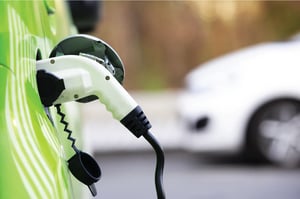 Now that Volvo announced their ambitious goal of going electric by 2019 and leading countries like France are banning the sale of petrol and diesel cars by 2040, several questions about electric vehicles (EV) are put into light.
Now that Volvo announced their ambitious goal of going electric by 2019 and leading countries like France are banning the sale of petrol and diesel cars by 2040, several questions about electric vehicles (EV) are put into light.
The industry has been reinvigorated by this new emphasis on a more sustainable lifestyle; automotive companies are looking for opportunities to minimize environmental impact both up and down the supply chain, while minimizing waste. Although the move to electric vehicles is opening up new opportunities, the emerging environmental management challenges that companies face when EV batteries reach the end of their life cycle are prominent.
Considering the value associated with the materials that can be recovered from the batteries themselves, there are major benefits for companies looking to make their manufacturing process the most sustainable, even before regulations have been put in place.As the automotive industry continues to further explore the frontier of electric vehicles, a new set of environmental challenges is coming to the forefront. Questions about EV batteries are emerging, and manufacturers will need to find some answers soon.
What should happen to EV batteries at the end of the car's life cycle? What environmental regulations are related to these batteries? What role will equipment and part will manufacturers play in the life cycle of EVs?
At the End of the Life Cycle
Recycling electric vehicle batteries at the end of the product life cycle is seen as the greenest option. Many of the components of the standard lithium ion EV battery - like nickel, cobalt, copper, and lithium - can be salvaged and reused. These materials can be resold at a high market value, making dumping EV batteries into landfills a poor environmental and economic policy.
However, only as much as 5% of lithium-ion batteries are recycled in the European Union. And in some cases, damaged lithium-ion batteries can let out toxic fumes, which are severely harmful to humans. Elements like lithium and cobalt, essential to the production of these batteries, are becoming increasingly in demand and their difficult extraction pollutes the surrounding environment.
As the demand for EVs is growing, the lack of companies providing recycling services presents an escalating challenge. The bigger problem about recycling these lithium-ion batteries is the cost. More often, the cost of recycling is greater than the actual value of the lithium retrieved. So, while the possibility of recycling the lithium is available, manufacturers who are responsible for the proper disposal of these elements are struggling with this imposing barrier.
Instead, some automotive companies find ways to repurpose the lithium ion batteries for home or industrial use since the batteries still have some life left in them after being too deteriorated for EVs. The individual cells inside may still be usable, even if the battery may seem dead. In that case, the cells can be pulled and reused for a new EV battery or in another application like a portable energy unit.
Environmental Regulations
Being one of the most sustainable forms of transportation, electric cars produce a very low negative environmental impact. In some cases, it is even possible to be 100% sustainable through the use of renewable energy. And the green appeal of these cars does not pass unnoticed under the radar of governments.
With governments pressing automakers to increase sales of electric vehicles, companies are definitely feeling the heat. But, there are still little regulations concerning the life cycle of EV batteries. As the industry grows in the next years, laws and regulations will surely be put in place to protect users and the environment. Although there are no clear regulations put in place for the recycling of lithium-ion batteries, manufacturers should proceed with caution and be ready for any legislation on the horizon.
Role of Manufacturers
Although industry standards have not been set for manufacturers for the recycling of batteries, this does not stop automakers from taking big leaps. Tesla, leading company in the EV industry, took the matter into their own hands and introduced their closed loop battery recycling program. This program consists of a closed loop in which all the material from manufacturing and assemblage of the battery cell is reused when it is at the end of its life cycle. In this way, they can assume the ever-growing demand of battery recycling. Tesla partnered with the Kinsbursky Brothers in North America and with Umicore in Europe to recycle these EV batteries.
With this new industry picking up momentum, manufacturers will have no choice but to adapt to the forthcoming changes and plans for this promising business. As gas-running vehicles become upstaged, electric vehicles set business standards to surpass and innovate continuously.
Due to the complexity and recency of EVs and their mechanisms, a special eye must be kept on environmental reporting concerning all the processes of these cars. Recycling electric car batteries is an important approach to sustainability that will become crucial in the upcoming years as their presence increases on the market place. Take a look at ERA’s environmental management software which includes built-in tools to track recycling, emission reporting and supply chain data.
This Blog Was Co-Authored By:


Tags:
Supply ChainMay 8, 2012
Comments